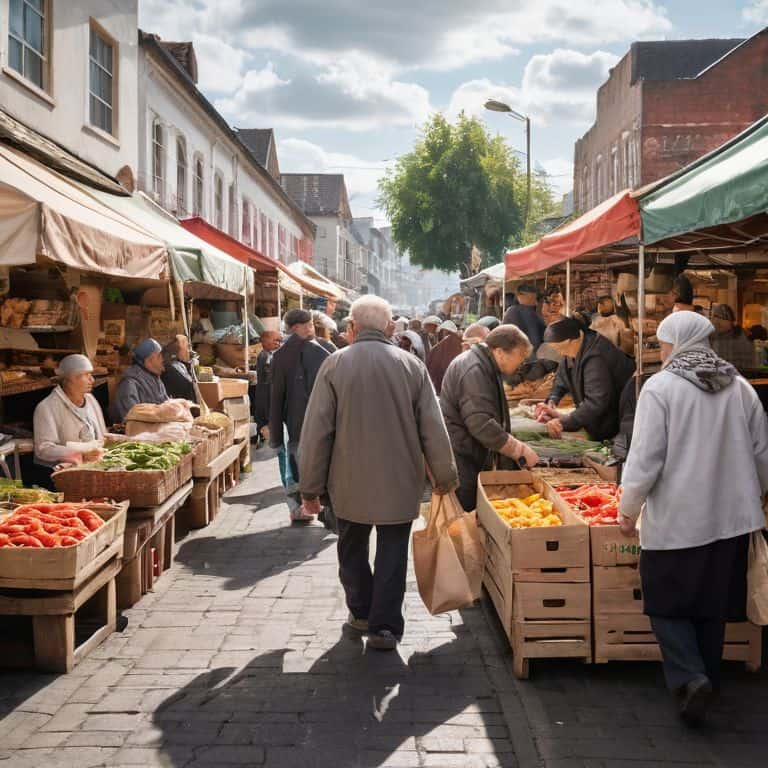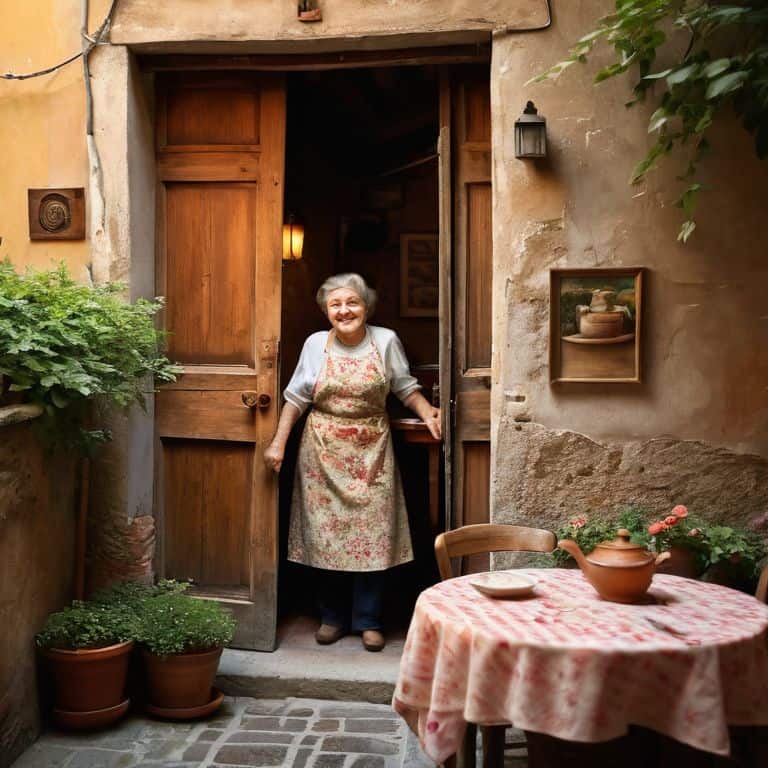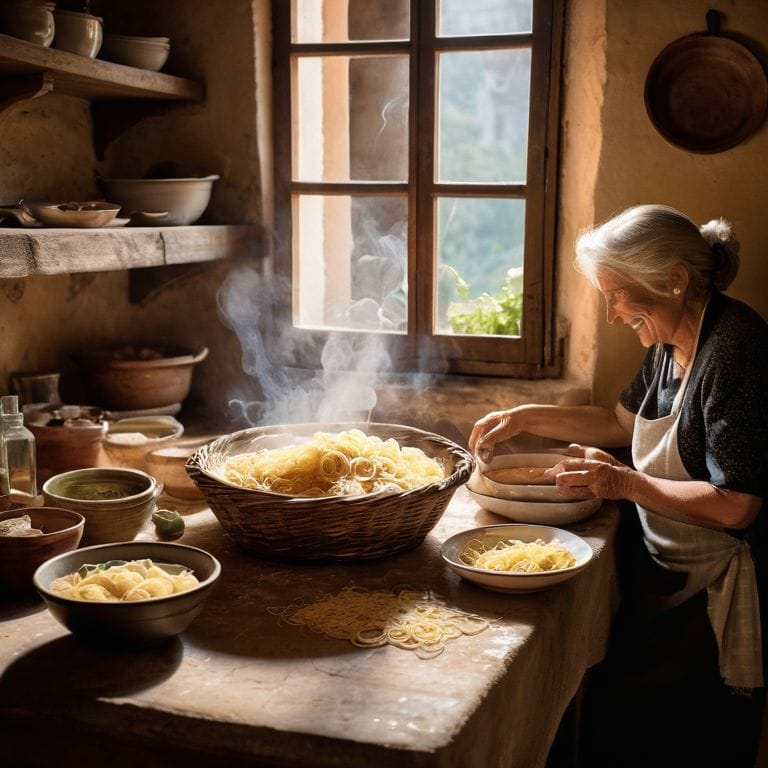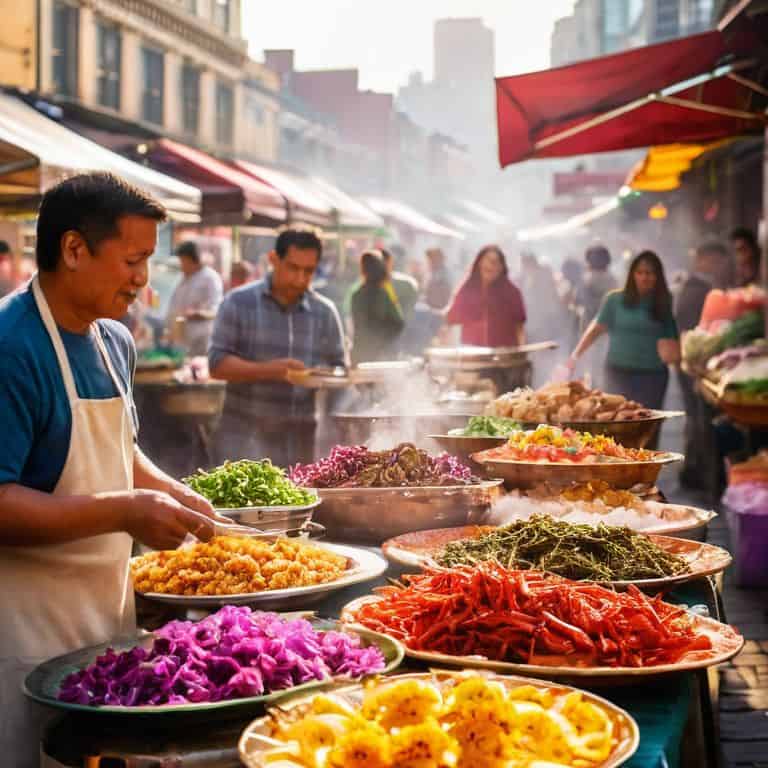I still remember the day I stumbled upon a small, family-owned eatery in Tokyo, where the grandmother of the house taught me the secret to making the perfect tonkatsu. It was a lesson that changed my approach to understanding the true essence of a culture – how to eat like a local. For years, I’ve been traveling the globe, and I’ve come to realize that the best way to experience a place is not by following a tourist guide, but by sitting down with the locals and sharing a meal. The problem is, most of us get stuck in the trap of eating at fancy restaurants or following overly complicated recipes that claim to be “authentic.”
As someone who’s had the privilege of learning from grandmothers and street food vendors around the world, I’m excited to share my no-nonsense approach to eating like a local. In this article, I’ll take you on a journey to the heart of culinary traditions, where the focus is on simple, honest flavors rather than fancy presentation. You’ll learn how to navigate unfamiliar markets, how to identify the best street food stalls, and how to cook traditional dishes with ease. My goal is to empower you with the knowledge and confidence to venture beyond the tourist menu and discover the real flavors of a place, just like I have.
Table of Contents
Guide Overview: What You'll Need

Total Time: varies by location and personal pace
Estimated Cost: $10 – $50
Difficulty Level: Easy
Tools Required
- Smartphone (with internet access for research)
- Map (physical or digital)
- Notebook (for recording recommendations)
Supplies & Materials
- Local Currency (for purchasing food and drinks)
- Water Bottle (for staying hydrated)
- Snacks (local specialties to try)
Step-by-Step Instructions
- 1. First, ditch the guidebook and forget about the restaurants that are advertised in every tourist brochure – they’re usually overpriced and lack the authenticity you’re looking for. Instead, take a stroll through the local markets and streets, and follow the smells and sounds that tantalize your taste buds. You’ll often find the best food in the most unexpected places, like a small cart on the corner or a hole-in-the-wall eatery that’s packed with locals.
- 2. Next, learn to recognize the signs of a truly local eatery. Look for places with a long line of patients, or a crowd of locals chatting and laughing together. These are usually the spots that serve the most authentic and delicious food. Don’t be afraid to join the line and wait your turn – it’s often worth it, and you’ll get to experience the local culture firsthand.
- 3. When you find a place that looks promising, take a seat at the bar or counter and strike up a conversation with the chef or vendor. Ask them about their favorite dishes, and what ingredients they use to make them. You’ll often find that the most popular items on the menu are the ones that have been passed down through generations, and are made with love and care. Don’t be afraid to ask questions – the locals will appreciate your interest in their cuisine.
- 4. Now it’s time to order like a local. Forget about the menu, and ask your new friend behind the counter what they recommend. You can also try ordering in the local language – it’s a great way to show respect and appreciation for the culture. Don’t worry if you make mistakes – the locals will appreciate your effort, and you’ll often get a better deal or a special treat.
- 5. As you wait for your food to arrive, take in the sights and sounds of the local eatery. Notice the decorations, the music, and the atmosphere – it’s all part of the experience. You can also try chatting with the other patrons, and learning more about the local culture and customs. This is a great way to make new friends and get a feel for the community.
- 6. When your food arrives, dig in with gusto. Don’t be afraid to try new things, and to ask for seconds (or thirds, or fourths…). The locals will appreciate your enthusiasm, and you’ll often find that the food is even more delicious than you expected. Be sure to also try the local drinks, like fresh juices or craft beers – they’re often a great complement to the meal.
- 7. Finally, don’t be afraid to get a little messy. Eating like a local often means using your hands, or trying new and exotic foods that may be unfamiliar to you. It’s all part of the experience, and you’ll often find that the most memorable meals are the ones that are a little bit messy and unpredictable. So go ahead, get a little dirty, and enjoy the ride – it’s all part of the adventure of eating like a local.
How to Eat Like a Local

As I delve deeper into the world of authentic dining experiences, I’ve come to realize that it’s not just about the food, but about the people and the culture behind it. I recall a visit to a small village in Italy, where I stumbled upon a local food blog that led me to a hidden gem of a restaurant, tucked away in a quiet alley. The owner, a warm and welcoming nonna, shared with me her secrets for traditional Italian cooking, and I was hooked.
To truly immerse yourself in the local culinary scene, it’s essential to venture off the beaten path and explore the regional specialties that make each place unique. Whether it’s a spicy street food in Thailand or a hearty stew in Ireland, every dish tells a story about the people and the land that shaped it. By embracing these cultural culinary norms, you’ll not only taste the authentic flavors of a region but also gain a deeper understanding of its history and traditions.
As you wander through the streets, keep an eye out for food festival guides that showcase the best of local cuisine. These events are a treasure trove of flavors, aromas, and stories, and they often feature local food vendors who are passionate about sharing their craft with visitors. By attending these festivals and engaging with the people behind the food, you’ll discover the true essence of a place and create memories that will last a lifetime.
Beyond Tourist Traps Authentic Dining Experiences
Beyond the glossy brochures and tourist menus, lies a world of authentic flavors waiting to be uncovered. I’ve found that the best way to experience a place is through its street food vendors and family-run eateries. These hidden gems offer a glimpse into the local culture, where tradition and innovation blend together in a delicious fusion. From the spicy kick of a Vietnamese banh mi to the rich flavors of a Moroccan tagine, each dish tells a story of the people and their history.
By venturing off the beaten path, you’ll discover the real essence of a place, unfiltered and unpretentious. The grandmothers, the market stalls, and the hole-in-the-wall eateries – these are the guardians of traditional cuisine, and the key to a truly immersive culinary experience.
Uncovering Local Food Secrets Off the Beaten Path
As I wandered through the alleys of Marrakech, I stumbled upon a small food stall tucked away from the bustling souks. The aroma of sizzling meats and spices drew me in, and I was greeted by a warm smile from the vendor, who offered me a taste of his signature dish. It was a flavor I’d never experienced before – a perfect blend of spices and herbs that seemed to dance on my palate. This, I realized, was the true essence of eating like a local: venturing off the beaten path and uncovering hidden gems that reveal the authentic taste of a culture.
I’ve found that these local food secrets are often hidden in plain sight, waiting to be discovered by curious travelers. By venturing into local markets, chatting with street food vendors, and seeking out family-run eateries, I’ve uncovered a world of flavors that lie beyond the tourist menu.
Dining like a Native: 5 Tips to Unleash the Flavors of the World
- Follow the locals to their favorite street food stalls and markets, where the true essence of a culture’s cuisine comes alive
- Learn a few basic phrases in the local language, such as ‘where can I find the best…’ or ‘what’s your specialty?’, to connect with vendors and grandmothers who’ll share their secrets
- Be adventurous and willing to try new ingredients and dishes, even if they’re unfamiliar or unconventional, as this is where the most memorable culinary experiences are found
- Visit local eateries during off-peak hours, when the atmosphere is more relaxed, and the staff are more likely to share stories and recommendations about the authentic dishes
- Explore beyond the main tourist areas and wander into neighborhoods where locals live and eat, as this is often where the most authentic, untouristed restaurants and food shops are hidden, waiting to be discovered
Key Takeaways: Eating Like a Local
Follow the locals, especially grandmas and street food vendors, to discover authentic flavors and dishes that aren’t listed in tourist menus
Ditch the fancy restaurants and opt for plastic stools on busy sidewalks or home-cooked meals in local households for a genuine culinary experience
Immerse yourself in the local culture by learning about traditional ingredients, cooking methods, and recipes, and don’t be afraid to try new and unfamiliar foods to broaden your palate
The Key to Authentic Flavors
To truly eat like a local, you must be willing to get lost in the streets, to follow the aromas, and to trust the wisdom of the grandmothers and street food vendors – for they hold the secrets of a culture’s soul, and its most authentic flavors.
Marco Bianchi
Savoring the Flavors of the World

As I reflect on my journeys, I’m reminded that eating like a local is not just about the food, but about the people and places that make it. From the vibrant street markets to the humble kitchens of grandmothers, every dish tells a story of tradition, culture, and community. By ditching the tourist traps and seeking out authentic dining experiences, we not only taste the real flavors of a region, but we also support the local economy and preserve culinary traditions. Whether it’s a spicy curry in India, a rich tagine in Morocco, or a hearty bowl of pasta in Italy, each bite is a testament to the power of food to bring us together and transcend borders.
As you embark on your own culinary adventures, remember that the true magic happens beyond the menu. It’s in the conversations with vendors, the laughter with locals, and the moments of wonder that come from trying something new. So, go ahead, take a seat on that plastic stool, and let the flavors of the world transport you to a place of discovery and delight. For in the end, it’s not just about the food – it’s about the journey, the people, and the memories we create along the way. And that, my friends, is the greatest recipe of all.
Frequently Asked Questions
How can I find authentic local eateries in a foreign city without getting lost in translation?
Ah, my friend, it’s all about embracing the unknown! Ask locals, not tourists, for recommendations. Look for eateries with lines of locals, and don’t be afraid to point and smile when ordering. And, of course, follow the street food vendors – they’re the guardians of authentic flavors!
What are some common mistakes tourists make when trying to eat like locals, and how can I avoid them?
I’ve seen tourists fall into the trap of eating at overpriced, Westernized restaurants. To avoid this, ditch the guidebook and follow the locals to street food stalls and family-run eateries. And please, don’t be afraid to try new things – it’s often the weirdest-looking dishes that hold the most flavor and cultural significance!
Are there any specific local customs or etiquette I should be aware of when dining at street food stalls or family-owned restaurants?
When dining at street food stalls or family-owned restaurants, respect local customs by using your right hand, trying a little of everything, and not leaving your chopsticks standing upright. A smile and a willingness to learn go a long way – I’ve found that grandmas and vendors appreciate curious eaters!
